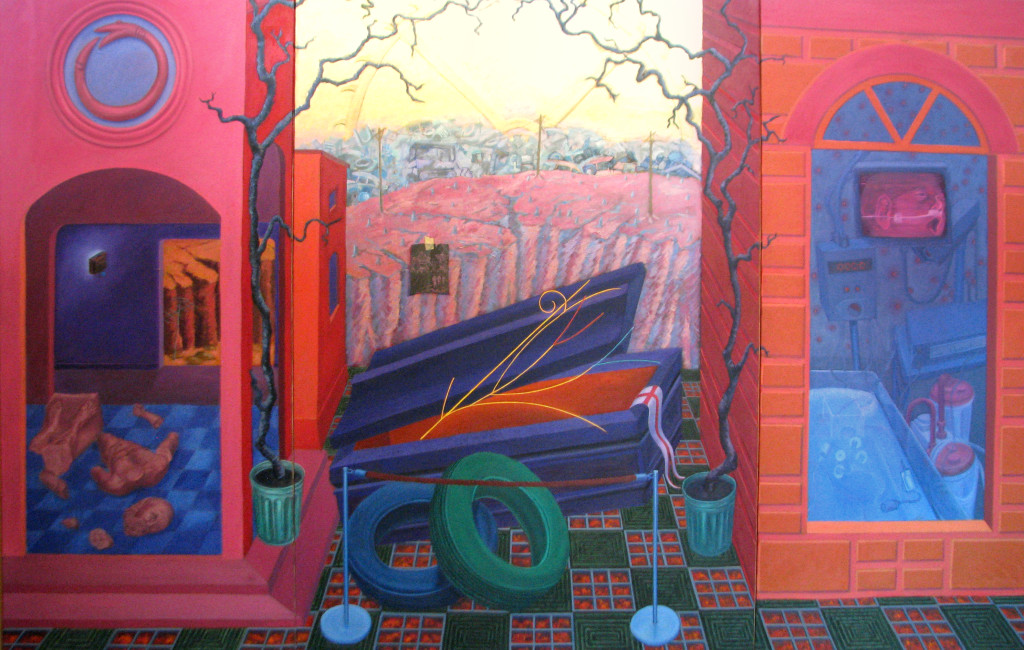1053 East Whitaker Mill Road, Suite 105919-828-7557[email protected]11-6pm Tuesday - Friday, Monday & Saturday by appointment
Focal Point: George Bireline’s “Resurrection”

| With the celebration of George Bireline’s work we have many pieces from throughout his life. One of the most significant and awe inspiring pieces is his massive triptych entitled “Resurrection”and it is the focal point of the exhibition. This is the first public showing of the piece since it’s creation in 1989, when it was purchased by his best friend Mike Reynolds directly from Bireline’s Studio. After Reynold’s death the piece was passed to his family who have graciously allowed us to place it on display within the exhibition and have offered it up for sale. Measuring at 80 x 135 inches, the massive size of Bireline’s work engulfs the viewer within the iconographic narrative of the work. The iconography is represented with both ancient and modern symbols. Depicted at the top of the left most panel is the symbol of the ouroboros, a depiction of a snake eating it’s own tail representing infinity or eternity. It is thought that this same iconography is repeated using a modern interpretation of automobile tires within the central panel. |
| This idea of eternity is echoed through out the piece with many other symbols and depictions of life and death. On the far left is a broken statue and self portrait of Bireline representing his own fragile mortality. The center panel contains a coffin alluding to death, but peaking from within the coffin is a flag with the Cross of Saint George and a golden branch representing new life. On the far right panel there is a depiction of a medical room. The room contains what seems to be medical equipment used for incubation of a newborn child. A camera faces an empty bed and monitor depicts the face of a newborn, showing an anticipation for a new birth or resurrection. To feel the true impact and implication of Bireline’s “Resurrection” one must stand within it’s presence and become encapsulated within the narrative and iconography. As one walks away from the piece they are left questioning their own mortality and eternity.The show will be up until October 28th, 2017. Stop by to experience the full effects of Bireline’s work. |

